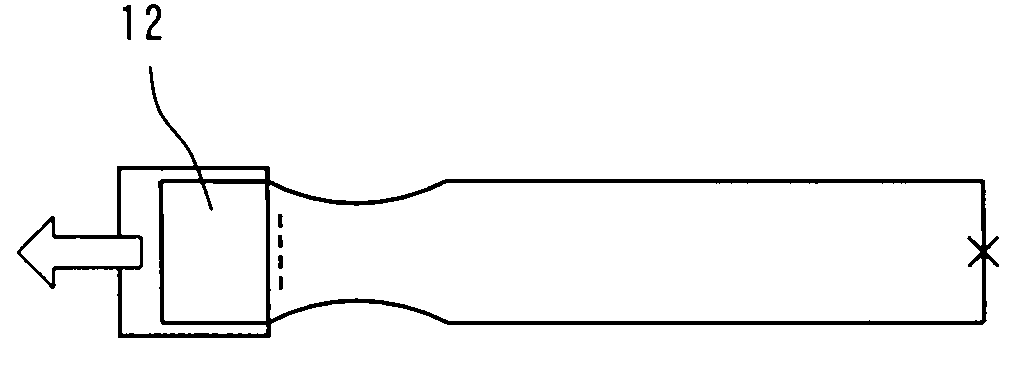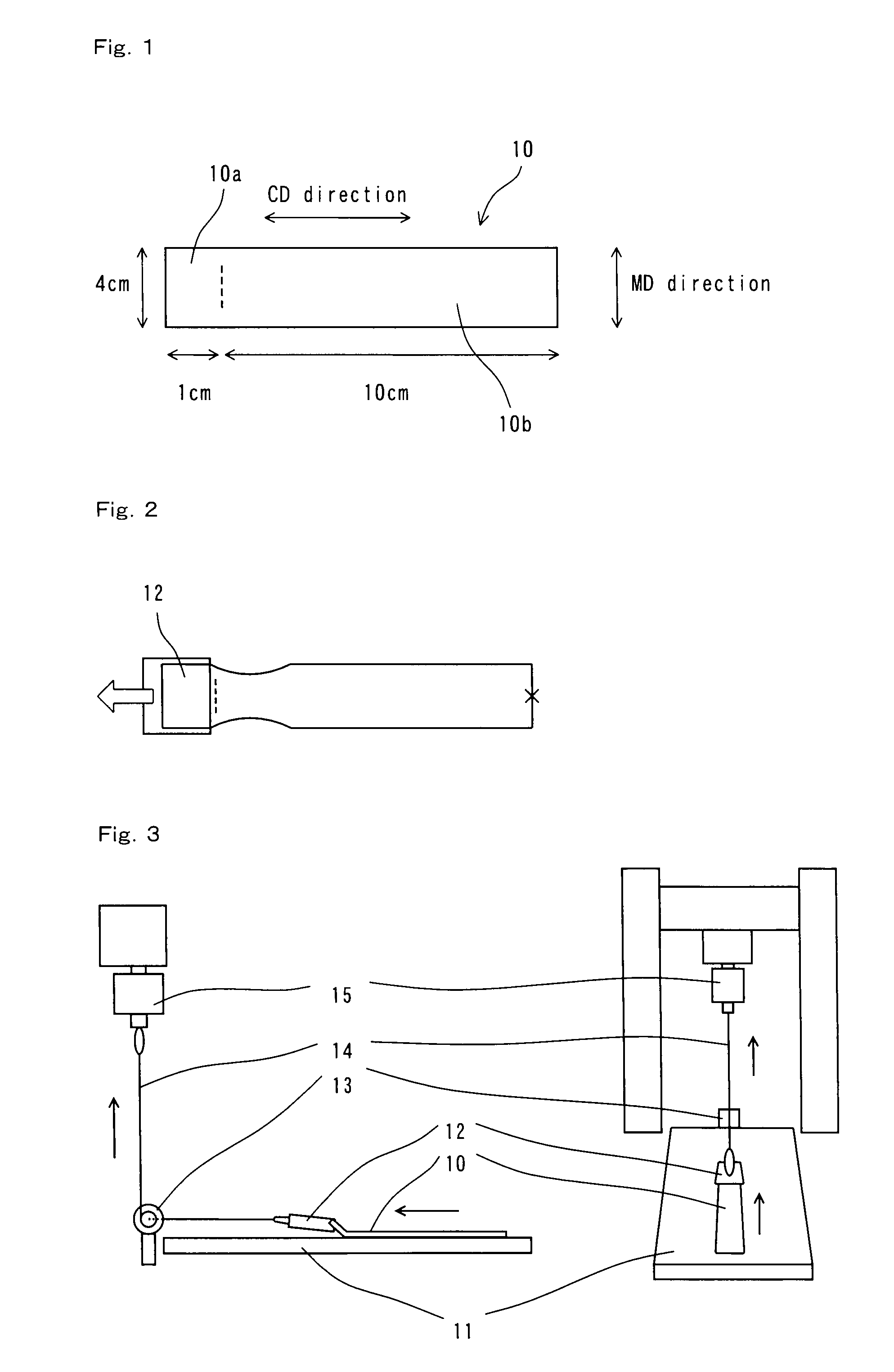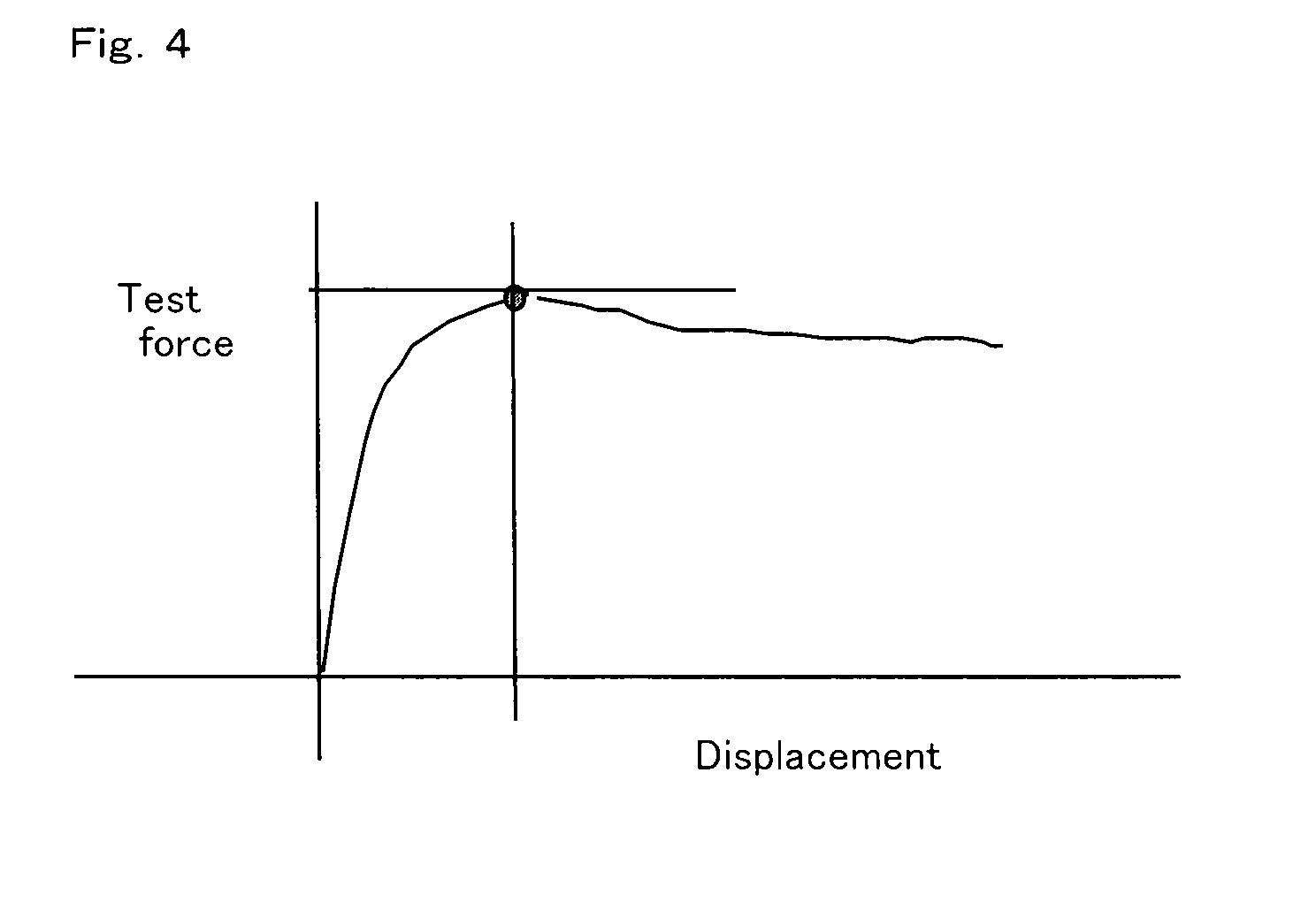Laminated sheet and process for producing the same
- Summary
- Abstract
- Description
- Claims
- Application Information
AI Technical Summary
Benefits of technology
Problems solved by technology
Method used
Image
Examples
example 1
[0140]Using a general meltblown production equipment, 100 parts by mass of the polypropylene resin (MFR=1100 g / 10 minutes) was spun by a meltblown method at a spinning temperature of 260° C., an air temperature of 270° C., an air pressure of 0.4 MPa, a discharged amount of 0.2 g / hole·min., the number of spinning holes in mouthpiece of 400 (arranged in a line), and the resulting fiber was collected on a rotating net conveyor as a support to produce a meltblown nonwoven fabric sheet having a basis weight of 5 g / m2, and the sheet was rolled up.
[0141]Forty (40) parts by mass of the rayon fiber and 60 parts by mass of the polyester fiber were blended uniformly, and then a semi-random card web having a basis weight of 60 g / m2 was produced in the usual manner. The card web was placed on a punching drum support having an open area ratio of 25% and a hole diameter of 0.3 mm. The card web was continuously moved at a speed of 50 m / minute in a longitudinal direction thereof, and simultaneously ...
example 2
[0145]In the same manner as in Example 1 except that the basis weight of the semi-random card web was 40 g / m2, a combined nonwoven fabric having a basis weigh of 45 g / m2 was obtained. With respect to the resulting nonwoven fabric sheet, the thickness ratio was 8.7 of the liquid-retention layer relative to one (1) of the adhesion layer. Moreover, the fiber of the adhesion layer composed of the meltblown nonwoven fabric in the resulting nonwoven fabric sheet had a number-average fiber diameter of 2.57 μm and a standard deviation of fiber diameter distribution of 1.318, and the coefficient of fluctuation of the fiber diameter was 51.26%. Furthermore, in the resulting nonwoven fabric sheet, the liquid-retention layer had a void ratio of 93.3%, and the adhesion layer had a void ratio of 88.6%.
[0146]The sheet was impregnated with the cosmetic preparation, and the adhesion of the sheet was measured. As with Example 1, the adhesion of the sheet having an impregnation rate of 500% by mass wa...
example 3
[0148]Using a general meltblown production equipment, 100 parts by mass of the poly (butylene terephthalate) resin (MFR=90 g / 10 minutes) was spun by a meltblown method at a spinning temperature of 280° C., an air temperature of 290° C., an air pressure of 0.4 MPa, a discharged amount of 0.3 / hole·min., the number of spinning holes in mouthpiece of 400 (arranged in a line), and the resulting fiber was collected on a rotating net conveyor as a support to produce a meltblown nonwoven fabric sheet having a basis weight of 20 g / m2, and the sheet was rolled up.
[0149]In the same manner as in Example 1, an entangled fiber web (nonwoven fabric) was produced using 40 parts bymass of the rayon fiber and 60 parts by mass of the polyester fiber. The previously produced meltblown nonwoven fabric sheet having a basis weight of 20 g / m2 was unwound with a unwinding apparatus, and superposed on the web. The sheet and the web were placed on an entirely flat support having a finer mesh, and continuously...
PUM
| Property | Measurement | Unit |
|---|---|---|
| Percent by mass | aaaaa | aaaaa |
| Percent by mass | aaaaa | aaaaa |
| Percent by mass | aaaaa | aaaaa |
Abstract
Description
Claims
Application Information
 Login to View More
Login to View More - R&D
- Intellectual Property
- Life Sciences
- Materials
- Tech Scout
- Unparalleled Data Quality
- Higher Quality Content
- 60% Fewer Hallucinations
Browse by: Latest US Patents, China's latest patents, Technical Efficacy Thesaurus, Application Domain, Technology Topic, Popular Technical Reports.
© 2025 PatSnap. All rights reserved.Legal|Privacy policy|Modern Slavery Act Transparency Statement|Sitemap|About US| Contact US: help@patsnap.com



